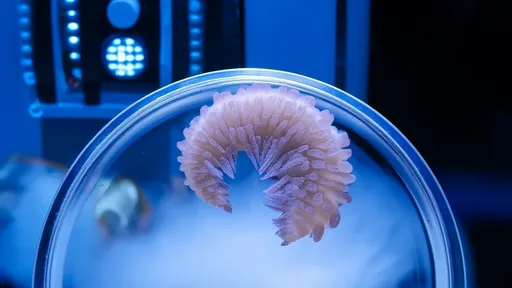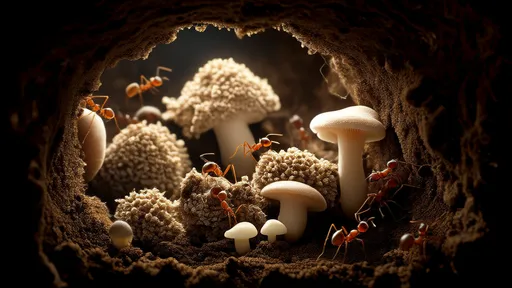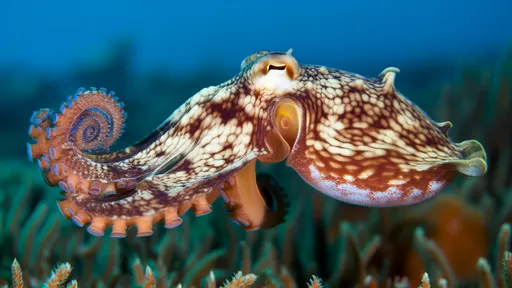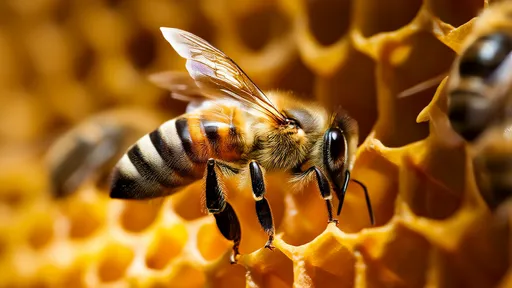In the dense rainforests of Central and South America, leafcutter ants have perfected an agricultural system that puts human farms to shame. These tiny farmers cultivate fungus gardens as their primary food source, carefully tending their crops with a sophistication that has fascinated scientists for decades. Recent research reveals an even more remarkable aspect of their farming practices: the ants employ a sophisticated antibiotic rotation system to protect their fungal crops from parasitic infections, a strategy that could inspire new approaches to human antibiotic use.
The leafcutter ant-fungus mutualism represents one of nature's most complex symbiotic relationships. Worker ants harvest fresh vegetation which they transport back to their nests to feed their cultivated fungus. This fungus, in turn, serves as the colony's sole food source. However, this delicate agricultural system faces constant threat from a specialized parasitic fungus called Escovopsis, which can devastate the ants' fungal gardens if left unchecked.
What makes this system particularly extraordinary is how the ants manage pathogen resistance without modern pharmaceuticals. The ants' metapleural glands produce antimicrobial compounds that suppress Escovopsis growth. But unlike humans who often use single antibiotics until resistance develops, the ants appear to employ a dynamic, multi-faceted defense system that prevents the parasite from adapting.
Scientists have discovered that different ant species maintain relationships with multiple strains of antibiotic-producing bacteria (Pseudonocardia and Streptomyces) on their cuticles. These bacteria generate different antimicrobial compounds at different times, creating what researchers describe as a "rotating antibiotic regime." This natural rotation prevents Escovopsis from developing resistance to any single antimicrobial agent, mirroring the antibiotic cycling strategies that human medicine attempts (often unsuccessfully) to implement in hospitals.
The sophistication doesn't end there. Evidence suggests that ants may adjust their antimicrobial strategies based on multiple factors including the age of the fungal garden, seasonal changes, and even the specific strain of Escovopsis present. Some colonies appear to "sense" when resistance is developing and switch to alternative antimicrobial compounds accordingly. This dynamic, responsive approach to disease management puts our static antibiotic protocols to shame.
Human medicine faces an alarming crisis of antibiotic resistance, with multidrug-resistant pathogens causing millions of deaths annually. Our approach typically involves using a single antibiotic until it becomes ineffective, then moving to another. The ants' system suggests that simultaneously deploying multiple antimicrobial strategies and regularly rotating them might prove more effective at preventing resistance. Some pharmaceutical researchers are now studying whether we can develop similar combination therapies or rotation schedules based on the ants' natural system.
Beyond antibiotic rotation, the ant-fungus system offers other insights for sustainable agriculture and medicine. The ants practice sophisticated waste management to prevent disease spread, maintain genetic diversity in their fungal crops, and even quarantine infected portions of their gardens. These behaviors parallel modern concepts like integrated pest management and could inform more sustainable approaches to human agriculture.
As we face growing challenges from drug-resistant pathogens, nature's solutions may offer our best hope. The leafcutter ants' 50-million-year-old farming system has survived precisely because it evolved dynamic, multifaceted defense strategies. By looking to these tiny pharmacists of the rainforest, we might discover new paradigms for managing our own microbial threats without accelerating resistance. Their success suggests that the future of antimicrobial therapy may lie not in stronger single drugs, but in smarter, more adaptable systems of defense.

By /Aug 7, 2025

By /Aug 7, 2025

By /Aug 7, 2025

By /Aug 7, 2025

By /Aug 7, 2025

By /Aug 7, 2025

By /Aug 7, 2025

By /Aug 7, 2025

By /Aug 7, 2025

By /Aug 7, 2025

By /Aug 7, 2025

By /Aug 7, 2025

By /Aug 7, 2025

By /Aug 7, 2025

By /Aug 7, 2025

By /Aug 7, 2025

By /Aug 7, 2025

By /Aug 7, 2025

By /Aug 7, 2025

By /Aug 7, 2025